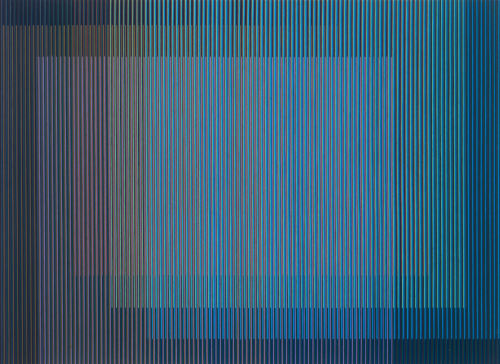"'The Chromatic event' unleashes other ideas. Before it is a Physichromie (an object), a Physichromie is a support for an event. It cannot be enjoyed in the same way we might enjoy a traditional painting; it demands active involvement rather than passive contemplation. There is no place for symbolic interpretations because it is its own reference."
—Carlos Cruz-Diez [1]
Carlos Cruz-Diez (b. 1923, Caracas, Venezuela - d. 2019, Paris, France) was a pioneering Venezuelan artist celebrated for his groundbreaking experiments in kinetic and optical art. Driven by a lifelong mission to liberate color from form and material constraints, Cruz-Diez created interactive artworks highlighting chromatic phenomena in constant flux. Initially working in figurative styles, a 1951 encounter with Johann Wolfgang von Goethe’s writings on color’s emotional potency led Cruz-Diez toward abstraction. Seeing color and light as events contingent on context, his art interrogated color perception through installations playing with motion and optical ambiguity.
Best known for his “Physichromies” combining thin color strips and reflective surfaces, Cruz-Diez mounted transformative architectural projects internationally while exhibiting in seminal Op and Kinetic Art shows. As art critic Christopher Knight wrote, “Cruz-Diez grasped that color behaves - that its appearance has as much to do with change over time and physical location as it does with visual characteristics.” From Caracas to Paris, his perceptually challenging artworks invite viewers to uncover color’s shifting subjectivity.
